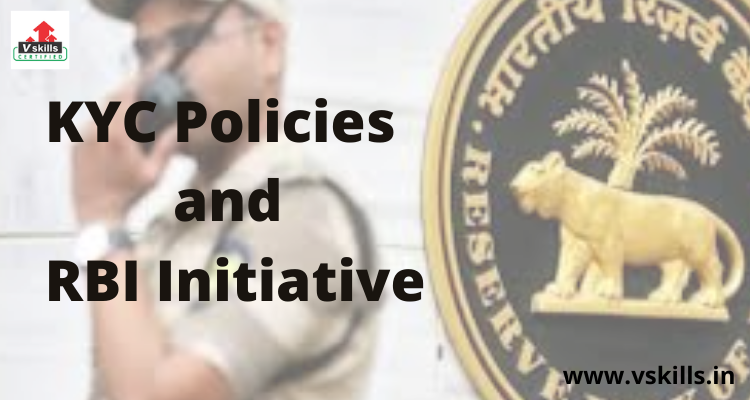
KYC Policies and RBI Initiative
It is very important to known KYC policies and RBI Initiative to control money-Laundering in the country. Reserve Bank of India has issued guidelines to banks under section 35A of the Banking Regulation Act, 1949 and Rule 7 of Prevention of Money-Laundering (Maintenance of Records of the Nature and Value of Transactions, the procedure, and Manner of Maintaining and Time for furnishing information and verification and maintenance of records of the Identity of the Clients of the banking companies, financial institution and intermediaries Rules, 2005. Any contravention thereof non-compliance shall attract penalties under the Banking Regulation Act, RBI has laid down the following KYC policies to be followed by banks.
The KYC policy of a bank should incorporate the following four elements,
- Customer Acceptance Policy;
- Customer Identification Procedure;
- Monitoring of Transactions and
- Risk Management
Organizational Structure in Banks
Customer Acceptance Policy (CAP)
Accounts of the following types of customers should not be opened at all,
- Accounts in Benami or fictitious names.
- Those with a known criminal background or with banned entities such as individual terrorists or terrorist organizations etc.
- Those who are acting on behalf of another person when they are not able to satisfactorily explain the purpose of opening such an account.
- Those whose identity cannot be verified.
Further considerations include
- Documentation requirements and other information to be collected in respect of different categories of customers depending on perceived risk and keeping in mind the requirements of PML Act, 2002 and instructions/guidelines issued by Reserve Bank from time to time
- Every bank should develop a clear Customer Acceptance Policy laying down explicit criteria for acceptance of customers.
- Parameters of risk perception are clearly defined in terms of the nature of the business activity, location of the customer and his clients, mode of payments, the volume of turnover, social and financial status, etc. to enable categorization of customers into low, medium, and high risk
- No account is opened or an existing account is closed where the bank is unable to apply appropriate customer due to diligence measures.


